Ready for some astro-pareidolia? This week, we look no further than Earth’s Moon, which reaches 1st Quarter phase this coming Sunday.
The Moon reaches First Quarter phase for lunation 1156 (which dates synodic cycles of the Moon using what’s called the Brown Lunation Number all the way back to January 17, 1923) this weekend on Sunday, June 12th, at 9:10 EDT/13:10 UT.
Every culture sees something different in the face of the Moon. The Chinese saw a rabbit, and named the Yutu ‘Jade Rabbit’ rover in honor of the myth. In Longfellow’s The Song of Hiawatha, it’s the body of the Iroquois Indian chief’s grandmother we see, flung up against the Moon. The Greeks believed the Moon was a large polished mirror, reflecting back a view of the Earth below. Of course, if this were the case, it would be hard to explain just how the image doesn’t shift during the night, as the Moon moves across the sky.
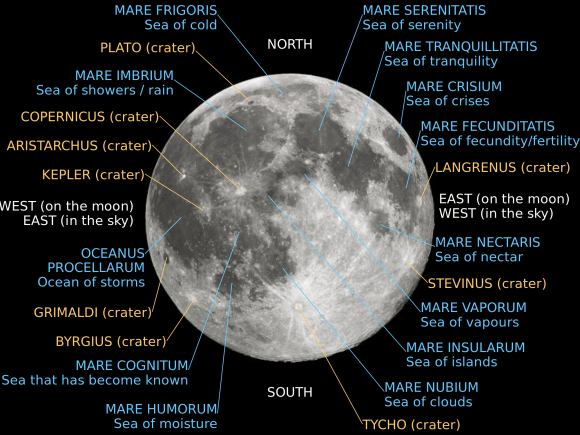
A cosmic Rorschach test, the Moon is tidally locked in the Earth’s embrace, keeping its far side forever hidden from our terrestrial vantage point. The subtle rocking motions known as libration and nutation allow us to peer over the edge just a bit, allowing us to see 59% of the Moon’s total surface. A glimpse of the far side had to wait until the Soviet Luna 3 spacecraft flew past the Moon on October 7th, 1959 and returned the first blurry images.
One of the most famous of the lunar letters is the Lunar X, also referred to as the Werner X or Purbach Cross. This is the confluence of the rims of the craters La Caille, Blanchinus and Purbach located in the lunar highlands. The Lunar X becomes visible as the waxing gibbous Moon reaches seven days illumination, about 6 to 10 hours (depending on the incident sun angle) after First Quarter phase, and 6 to 10 hours before Last Quarter. The Lunar X can stand out in dramatic contrast against the darkness just beyond the lunar terminator, if you can catch it just as the first rays of sunlight hits the top of the ridge. Remember, the span of sunrise to sunset lasts two weeks on the Moon, and looking Earthward, you’d see the Earth in an opposite phase.
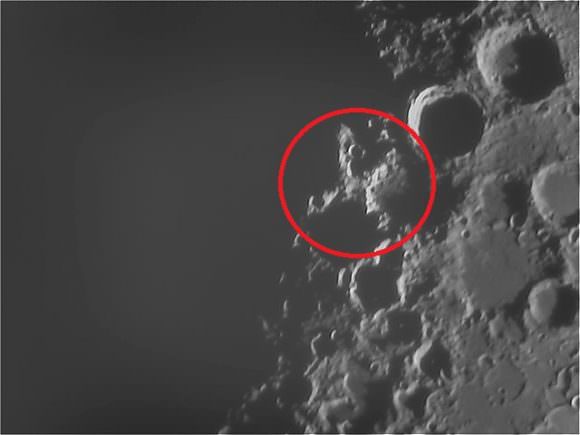
Sometimes, the Curtiss Cross feature is referred to as a lesser known Lunar X; the confluence of two or more crater rims on the battered surface of the Moon is far from uncommon.
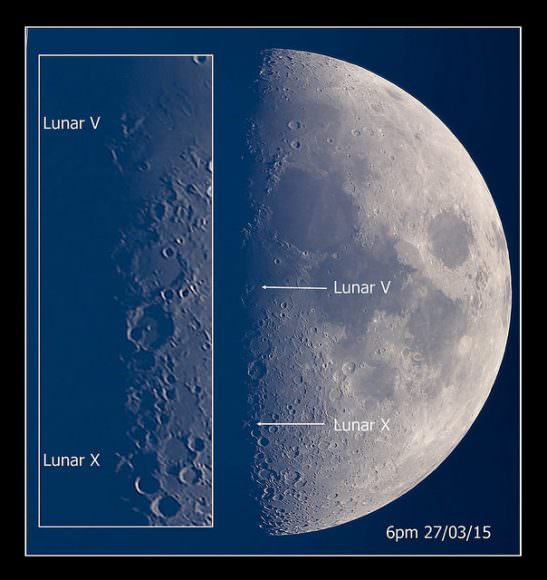
Sweeping northward, the Lunar V feature in the Mare Vaporum is also sometimes prominent around the same time as the Lunar X, and it’s possible to nab both in the same image.
Doubloons! Look for the lunar ‘S’ on the 19th September 2015http://t.co/qhW4krMIba pic.twitter.com/rTnApfKQXg
— blobrana (@blobrana) September 18, 2015
Other lunar letters of note include the Lunar S in Sinus Asperitatis (visible at 47% illumination just before First Quarter), the Lunar W located near Mons Rümker on the lunar limb in the Oceanus Procellarum, and our favorite of the lesser known lunar letters, the Lunar Q of crater Kies in the Mare Nubium reaching favorable illumination 10 days after New. You can see a partial listing of lunar letters in the WikiMoon article here.
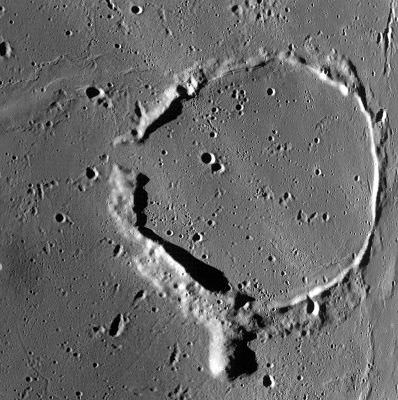
Of course, circular craters provide a wealth of candidates for the ‘Lunar O,’ and straight line features such as the Rupes Recta lunar straight wall feature in the Mare Nubium could easily pass for the ‘Lunar I’. Veteran lunar observer Charles Wood made a call in Sky and Telescope magazine to fill out the visual lunar alphabet in a similar fashion akin to Galaxy Zoo… hey, who wouldn’t love to spell out their name in craters? Maybe some of the recently mapped worlds such as Mercury, Pluto or Ceres could come to the rescue, filling in the final letters?
Many of these are optical illusions, tricks of lighting as the angle of the rising Sun slowly changes, casting shadows across the lunar landscape. Two illumination effects that are at work here straight out of art class are what’s known as the Clair-obscur or chiaroscuro phenomenon of light and shadow, and the Trompe l’Oeil effect, a three-dimension illusion of forced perspective. Follow features such as the Lunar X night to night as the Moon heads towards Full, and you’ll notice they nearly vanish amid the glare, as the Sun shines down from high overhead. The vanishing ‘face on Mars‘ was the result of the same trick of light seen in the early Viking 1 orbiter images. The ‘face’ vanished once the Mars Global Surveyor re-imaged the region during a pass at near-full illumination in 2001. Hey, why don’t conspiracy theorists ever cite the ‘Man in the Moon‘ as an artificial construct?
Why lunar letters? Well, I think its neat, to see something as familiar yet improbable as a gleaming letter on the lunar surface staring back at you at the eyepiece. If you look long and hard enough, the universe will produce just about anything, including telescope-building primates with language, and an accidental alphabet written in the heavens.

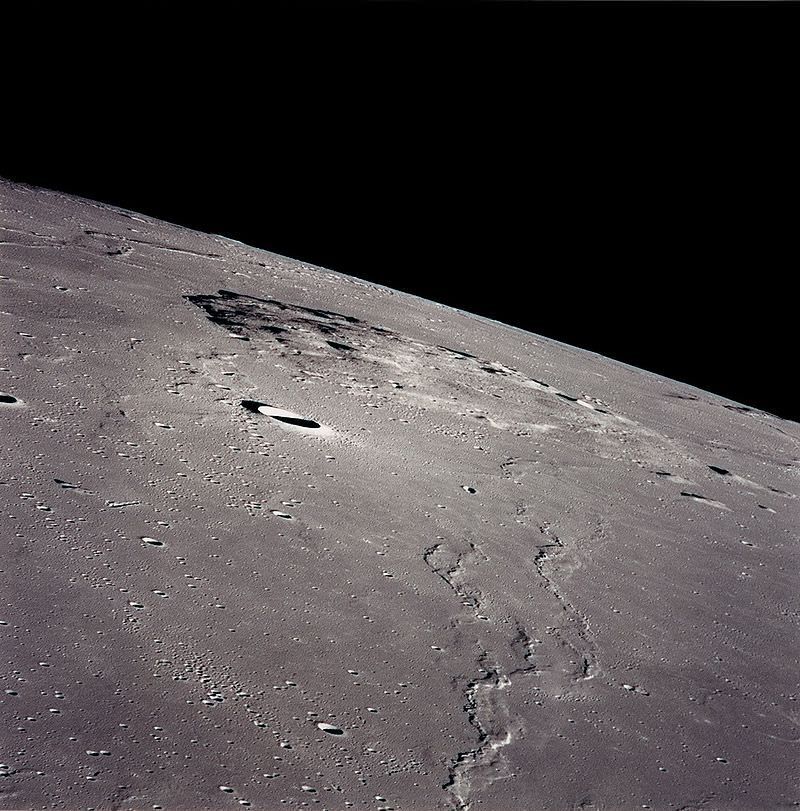
Unfortunate use of the name Hiawatha –
“Longfellow had originally planned on following Schoolcraft in calling his hero Manabozho, the name in use at the time among the Ojibwe/Anishinaabe of the south shore of Lake Superior for a figure of their folklore, a trickster-transformer. But in his journal entry for June 28, 1854, he wrote, “Work at ‘Manabozho;’ or, as I think I shall call it, ‘Hiawatha’—that being another name for the same personage.”[3] Longfellow, following Schoolcraft, was mistaken in thinking the names were synonyms. In Ojibwe lore the figure of Manabozho is legendary but the name Hiawatha is unknown. The name Hiawatha derives from the name of a historical figure associated with the League of the Iroquois, the Five Nations, then located in present-day New York and Pennsylvania.”
– https://en.wikipedia.org/wiki/The_Song_of_Hiawatha
I found the letter “O”! 🙂